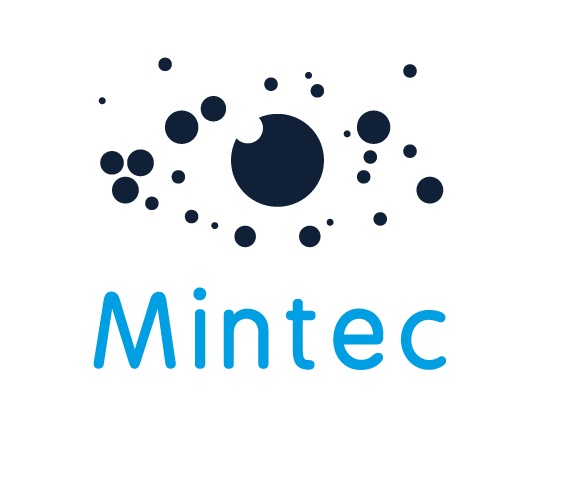It’s no secret that inflation has become one of the greatest economic worries of 2022, for both businesses and people alike. According to the Fed, European Commission and World Bank, this threat is not going anywhere soon and institutions such as the Bank of England have been put under immense pressure as companies plan for extended periods of inflation. Both the aftermath from the recent COVID pandemic alongside the current geopolitical instability as a result of the Russia-Ukraine war have contributed significantly to this issue. Additionally, the presence of large grain reserves being held hostage to the world by Russia have also put pressure on market prices of other goods.
According to Mintec: “Rising prices in 2022 are likely to see ongoing volatility in 2023 before a steep decline in prices by 2024. But the challenge for the c-suit, associated food procurement and buying teams will be identifying the optimum time to act. This will include taking early steps to hedge price risk at the right time to ensure more strategic outcomes.”
With these current predictions, we are likely to not see much relief from rising and unpredictable rates for around the next two years. This means that current inflation rates aren’t just a brief storm that businesses have to weather out but are closer to semi-permanent changes in climate which demand swift adaptation to survive.
Eurostat - the official statistical brand of the European Commission – have found that inflation rates in the EU increased up to 8.8% by May this year. Though this has been predicted by the commission to be the peak of inflation, it’s not expected for inflation to fall below 6% by February 2023 and fall back to regular levels (between 0-2%) anytime within the next year.
All-in-all, it seems clear that high and volatile price inflation – at least for now – is here to stay. The question for businesses now is what exactly this means for markets and how your company can future-proof its own food procurement to avoid the pitfalls associated with food and commodity prices inflation.
What Challenges Does Inflation Present to Businesses?
Alongside direct challenges to raw materials costs, reduced public spending and fewer loans from banks, high inflation also presents challenges with predicting and planning future business strategy and activity. Risks to price exposure can be significant, with poorly timed contracts locking in high prices for long amounts of time being a potential sinkhole for funds and devourer of profits.
This has especially been the case for the food and beverage price inflation over the past few months. We’ve already seen grocery retailers in the UK such as Tesco, Asda and Sainsbury’s increase the costs of some essential food items by up to 30% due to inflation.
The costs of certain ubiquitous goods such as rice is projected to reach around 490 USD/MT by the start of 2023, as predicted by Mintec. This price will fluctuate with a downwards trajectory over the next two years, but it is not predicted to fall back to early 2022 levels until at the earliest the beginning of 2025.
Additionally, the prices of beef and chicken will also see similar price trajectories. Currently, the prices for beef and chicken are at all-time highs of 5.25 EUR/kg and 165 C/lbs. Although cattle prices are predicted to fluctuate, they should stay at around the same level until the start of 2024, when they should begin a slow downward trajectory back to 2021 prices by 2026. Chicken is also expected to remain at a similar price for the foreseeable future, with May 2024 expected to reach the same highs of 165 C/lbs and now downward trajectory in sight.
Raw material costs aren’t the only thing which is going to affect a business’ future strategy. Additional factors such as the prices of fuel, electricity and packaging all have substantial effects on final profit margins. For example, the UK and other countries are recently experiencing a cost of energy crisis mostly due to the severed relationship with Russia. This has meant that the Pan-EU electricity price has surged to 201.4 EUR/MWh. This increase in electricity price has meant that prices to use factories and production lines in EU countries have also increased in cost, affecting the end price of the product.
Plastics such as Polyethylene terephthalate (PET) commonly used to package foods and beverages have also sharply increased in market price. In 2021, prices hovered around 760 EUR/MT but experienced a surge throughout 2022 to around a peak of 1780 EUR/MT. This is a 234% increase in price across a single year.
Finally, we have to also think about the fuel costs of transporting goods across countries. In 2021, amidst the global pandemic, fuel prices in the EU averaged around €1.28 per litre, but now that figure is much higher: around €1.85 per litre. Similar to plastics, this will mean transport companies will be increasing costs and this, in turn, is bound to impact future business strategy for companies across the continent. The transportation of goods is a necessary cost, but that doesn’t mean there aren’t businesses out there who are able to transport goods cheaper than others despite the increase in global fuel costs.
How Can Businesses Prepare for and Solve Problems Caused by Inflation?
Just because inflation causes widespread volatility and uncertainty for businesses does not mean it can’t be dealt with. Buying and food procurement teams face the brunt of these challenges and implementing solutions, with leaders in these areas needing a deep understanding of market volatility and likely supply disruption. With greater clarity of the direct and indirect costs of this disruption thanks to digital transformation, buying and procurement teams should be able to alter operations and processes to account for changes brought on by inflation.
The three main questions businesses have to answer in order to solve problems caused by inflation are: how to reduce raw material costs, how to optimize the timing of supplier contracts and how to improve in driving efficiency in procurement.
However, in order to implement these changes quickly and effectively, teams must be able to integrate and share information across operations and processes. There are 4 key actions businesses can take to help with this process:
-
- Visualize price changes and use these to make decisions
- React and respond to market drivers
- Plan and budget according to cost models, analysis and reports
- Place a strategic focus on tactical agility
1- Visualizing Price Changes and Using These to Make Decisions
Today, many companies are well aware of the benefits of data-driven decision making. However, much of this technique is focused on using previous data to inform future decisions. By using price forecasting, teams can have the ability to visualize future trends and patterns in the prices of raw goods. This allows them to make informed decisions which take into account probable future prices/
Services such as Mintec’s Commodity Price Forecast Service allow companies to achieve this with ease. Outsourcing price forecasting to such services provides food procurement teams with robust forecasts and hedging on over 15,000 independent food and ingredient markets. Using this information, buyers can procure materials and lock in deals at optimum times during dips in the market, attenuating the effects of inflation on the prices of raw goods.
2- Reacting and Responding to Market Drivers
Sometimes, having forecasting information isn’t enough when the data can’t be actioned on quickly enough to take advantage of it. Having an API to integrate and align data and insight into your systems, processes and workflow can significantly increase the speed of operations as well as the ease to access new data. Additionally, personalized alerts on news and price changes can be invaluable to helping your business react quickly to the increased volatility brought on by inflation.
Reacting quickly to new information can help you stay ahead of the competition and understand where markets are headed before your competitors and suppliers. With the added personalized alerts, you can stay up to date on the most relevant information and cut out much of the noise that comes with large-scale data collection.
3- Plan and Budget Using Cost Models, Analysis and Reports
Being able to forecast long-term price changes for raw materials means you business will be able to monitor how these changes will affect the price of your individual products. The Mintec Commodity Price Forecast Service delivers actual future price predictions, enabling buying teams to plan their raw material purchases, optimise spend, and reduce exposure to price risk.
With reliable future price predictions, businesses can plan supplier strategies to enhance their position in the negotiation of contracts using targeted market intelligence. This can lead to a much improved ability to control supplier costs. Once again, this can attenuate the effects of inflation on the future prices of your products, making your company more competitive in the long run and ensuring its longevity.
4- A Strategic Focus on Tactical Agility
Hedging advice provided by companies such as Mintec allows businesses to reduce their price exposure and lock in the best deals with suppliers. When combined with robust price forecasting, businesses can optimize contracting and purchasing strategy for individual suppliers.
When businesses are able to deal with suppliers, control supplier costs and raw material costs so accurately, this naturally leads to the ability to easily predict future earnings based on robust price and cost models. A better outlook on future earnings reduces potential future financial surprises and increases confidence in your company both from shareholders and buyers who rely on your goods to stock shelves or restaurants.
A Summary of the Benefits of Price Forecasting and Hedging Services
In summary, price forecasting and hedging services from professional and reliable companies can help to combat some of the root causes of inflation difficulties. Knowing exactly where raw material costs are likely to head over the next few years puts companies at a great advantage over their competitors and suppliers when negotiating contracts. This increased control of supplier costs and the ability to manage exposure to price risk are core foundations that help businesses overcome volatile markets.
Additionally, outsourcing this functionality to a professional service provider with API integration means teams within your food procurement business will experience a greater efficiency in processes, workflows and team collaboration. This speed and agility to move with the prices and come up with solutions to problems quickly provides your company with an edge over its competitors.
Finally, robust and accurate price forecasting increases the predictability in costs and earnings over the near future. This allows senior management to provide accurate forecasts on company performance to shareholders within the organization, elevating the status of the company.

.png?width=145&height=54&name=Mintec_Logo_Small_Use_Mono_RGB%20(2).png)
















